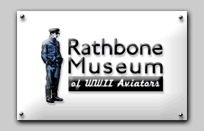 |
|
|
 |
 |
|
 |
 |
|
 |
 |
 |
|
|
|
 |
|
|
A parade dress uniform to a lieutentant of the Hungarian Air Force |
|
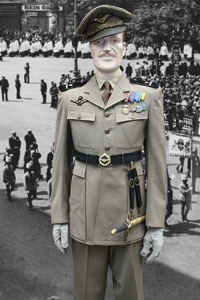 |
|
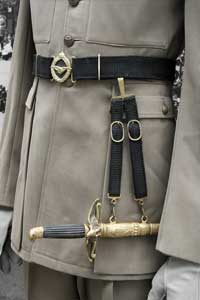 |
|
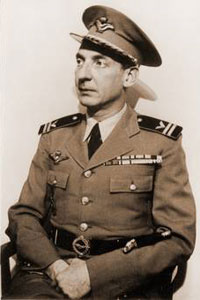 |
|
|
| The 1930 regulation service dress uniform could be worn with the officer's belt and dagger for parade occasions such as the parade in Budapest in the background. In this case, the officer is wearing fabric gloves to finish the uniform. |
|
The Hungaria Air Force officer's belt was made out of a black tightly knit, heavy gague weave. It was held together with a brass buckle. It was also adjustable as it simply looped through the buckle and was held by two brass clasps that held the ends in place once tightened. |
A Lieutenant sits for his photo
This Lieutenant (vs. second Lt.) has two stripes on his shoulder board. He sits for his formal portrait in the same style service dress with the addition of the parade belt and dagger. |
|
|
|
|
|
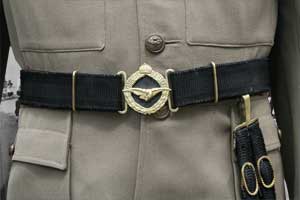 |
|
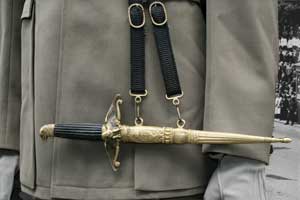 |
|
|
The officer's belt buckle featured the Royal Hungarian crown of St. Stephan and the Tural, a fesity bird of prey native to Hungary. It also had the same black fabric in the middle of the buckle. |
|
The Air Force Officer's dagger was an elegant accesory featuring the Tural as the head on the pommel and with outstretched wings for the hilt. The metal pieces were made of brass and the handle was made of fluted ebony wood. |
|
|
|
|
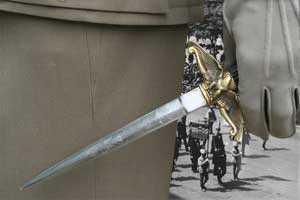 |
|
|
|
The blade of the dagger was only for appearances and was not sharp. It was nickel plated and featured either machine or hand etched (as in this case) designs related to Hungary, the air force or the owner's name or unit. |
|
|
|
|
|
|
|
|
|
| © Tod Rathbone |
|
|
|
|
|
|
|
|
|
|
|
|
|
|
|
|
|
|
|
|
|
|
|
|
|
|
|
|














